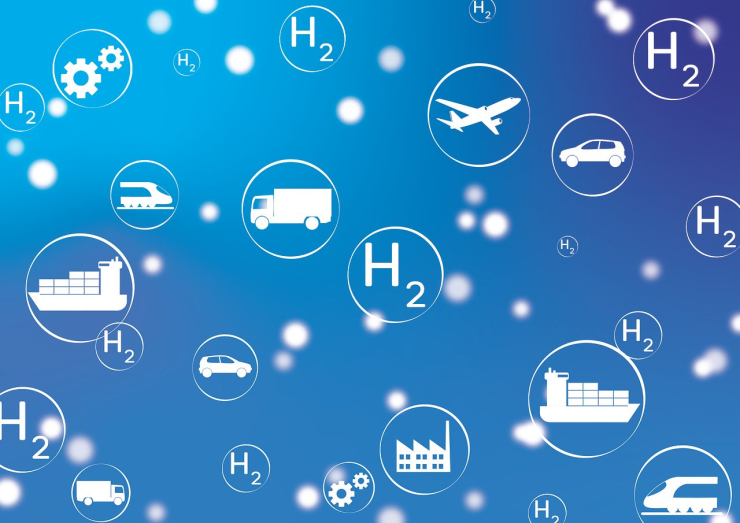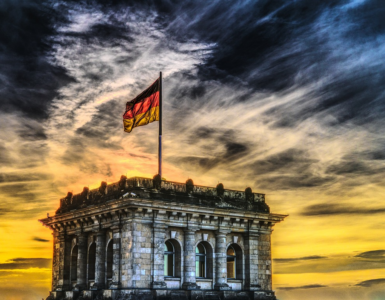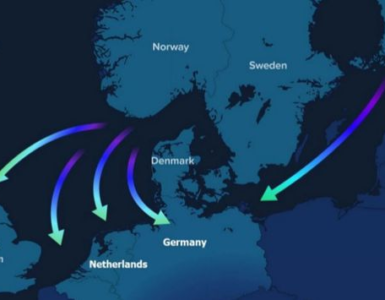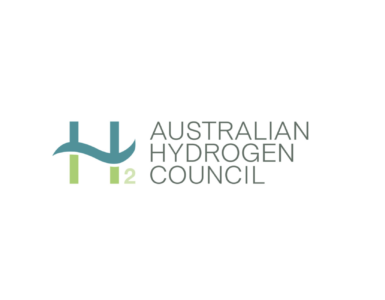Europe and the Eastern Mediterranean: the Potential for Hydrogen Partnership.
Low-carbon hydrogen has emerged as an important component of EU decarbonisation plans. It also adds a new element to the EU’s external energy policy, given that a substantial share of Europe’s future hydrogen requirements will need to be met with imports.
In this context, the Eastern Mediterranean region stands out as a potential supplier of low-carbon hydrogen for Europe owing to its proximity and its large renewable energy potential.
Energy cooperation in this region has focused on natural gas development in recent years but synergies could be possible if this cooperation extended to hydrogen development – both for exports and domestic decarbonisation.
🔥 What about we co-host a webinar? Let's educate, captivate, and convert the hydrogen economy!
Hydrogen Central is the global go-to online magazine for the hydrogen economy, we can help you host impactful webinars that become a global reference on your topic and are an evergreen source of leads. Click here to request more details
The non-EU countries of the Eastern Mediterranean region (Cyprus, Egypt, Israel, Jordan, Lebanon, Palestine, Syria, and Turkey) have not been early movers when it comes to hydrogen, but, to varying degrees, they have begun to take note of the potential opportunities it presents.
Apart from general awareness among policymakers of hydrogen’s growing prominence in the global energy and climate conversation, regional interest is being driven by three key factors.
First, EU policy emphasises importing hydrogen from its Southern Neighbourhood (Egypt, Israel, Jordan, Lebanon, Palestine, Syria, Algeria, Libya, Morocco, and Tunisia) and Eastern Neighbourhood (Armenia, Azerbaijan, Belarus, Georgia, Moldova, and Ukraine), which suggests EU funding and policy support could underpin the development of low-carbon hydrogen in the Eastern Mediterranean.
Second, many Eastern Mediterranean countries are very well-positioned to produce low-carbon hydrogen based on their renewable energy potential and substantial natural gas resources.
Third, the EU’s plan to introduce a Carbon Border Adjustment Mechanism (CBAM) signals that regional producers of energy-intensive goods destined for Europe will need to address their carbon intensity over time, thereby incentivising them to introduce low-carbon hydrogen into their production processes.
Recent steps toward hydrogen in the Eastern Mediterranean
The earliest mention of hydrogen strategy in the Eastern Mediterranean region came from Greece, which considered the role of hydrogen in its National Energy and Climate Plan published in 2019.
Greece’s National Natural Gas System Operator (DESFA) is actively engaged in the EU dialogue on hydrogen, notably through its participation in the European Hydrogen Backbone initiative, and is poised to begin construction of dedicated hydrogen pipeline infrastructure within Greece.
The country may also adopt domestic legislation on hydrogen in the near future. Egypt is in the process of introducing hydrogen into its Integrated Sustainable Energy Strategy – a major priority in the run-up to COP27, which will be hosted by Egypt in November 2022.
Egyptian state energy companies are engaged in active discussions with the private sector, including major European companies, on green hydrogen projects.
Eni, a major partner of the Egyptian state in the field of oil and gas production, has been working with the state-owned Egyptian Electricity Holding Company (EEHC) and Egyptian Natural Gas Holding Company (EGAS) since July 2021 to explore the feasibility of hydrogen production.
In August 2021, the EEHC signed a memorandum of understanding (MoU) with Siemens – a leading manufacturer of electrolysers for green hydrogen production – to work jointly toward the development of “hydrogen-based industry […] with export capability”.
Another group of international and local companies have signed a separate MoU to produce “green” (low-carbon) ammonia at Ain Sokhna. There have also been reports that members of this group are engaging in discussions with multiple potential partners for further green hydrogen development projects.
Other countries in the region are less advanced in their policy approaches toward hydrogen. Agreements to develop the first Israeli green hydrogen pilot project were just signed in December 2021. Israel also hosts some high-tech start-ups seeking to develop technologies in the hydrogen space.
Turkey has not developed a formal hydrogen strategy, but various technical initiatives and commercial studies are underway, driven mainly by the private sector and the scientific community. Turkey hosted the biennial meeting of the World Hydrogen Energy Conference in June 2022.
Blue or green hydrogen?
As they develop their hydrogen strategies, Eastern Mediterranean countries face the same fundamental question as any potential producer of low-carbon hydrogen: should policy focus on “green” hydrogen produced by renewable energy and electrolysis or “blue” hydrogen made from natural gas in a process that includes the capture and sequestration of resulting CO2 emissions?
One potential pathway: low-carbon hydrogen from natural gas
Using natural gas as the basis for hydrogen production may have specific appeal in the Eastern Mediterranean because of the region’s substantial natural gas resources, much of which remain untapped. Egypt has long been a major producer of natural gas, and it has recently been joined as an exporter by Israel, which began supplying gas to Jordan in 2017 and to Egypt in 2020.
Fully unlocking the region’s natural gas potential will require the establishment of one or more new extra-regional export options, using a combination of pipelines and existing (Egyptian) or new liquefied natural gas (LNG) liquefaction infrastructure.
One clear lesson of recent years is that major export projects are difficult to push forward, even when efforts are supported by high levels of regional cooperation. Solutions that allow more gas to be profitably monetised domestically – or within the wider Eastern Mediterranean region – remain appealing.
In this context, using natural gas to produce blue hydrogen for export or domestic use is a potentially attractive option. Aside from its natural gas reserves, the Eastern Mediterranean boasts two other advantages that would prove useful for it as a producer of blue hydrogen.
First, since much of the regional gas resources are based in large fields, unit costs of production would be relatively low by global standards, supporting hydrogen production economics.
The second advantage relates to the depleted sandstone reservoirs in Egypt’s Nile Delta, which are potentially suitable for CO2 sequestration and could facilitate the carbon capture and storage solutions needed to decarbonise hydrogen produced from gas.
To be sure, an approach based on the concept of exporting blue hydrogen to the EU would be risky given the evident preference for green hydrogen within EU policy overall, not to mention the policies of many EU member states including Germany.
This policy preference is based largely on the fact that current CO2 sequestration technologies can capture most but not all CO2 emissions, making blue hydrogen low-carbon but not zero-carbon.
Still, the EU has not explicitly ruled out the import of blue hydrogen; indeed, it has even been included in the EU taxonomy classification system for sustainable investments if its carbon intensity meets a certain specified threshold.
But at present, there is no guarantee that full policy and financial support for imports of blue hydrogen will be forthcoming from Europe.
Alternative option: taking advantage of the regional potential for renewable green hydrogen
If one assumes that green hydrogen based on renewable energy offers a more robust basis for projects targeting the European market, the outlook for the Eastern Mediterranean is still very attractive.
A glance at any map showing solar or wind potential shows that most of the region is highly prospective for wind, solar, or both – a potential that is increasingly being realised in renewable capacity additions across the region.
A comparison of costs for green hydrogen delivered to the EU from various global sources is beyond the scope of this analysis, but the proximity of Eastern Mediterranean countries to Europe, along with the region’s high solar and wind potential, suggests that it could be competitive as a source of hydrogen for the EU, particularly in comparison to more geographically distant sources.
One challenge for producing green hydrogen in the Eastern Mediterranean region will relate to the availability of fresh water, which is in particular short supply in Egypt, Israel, Jordan, and Palestine. In these jurisdictions, electrolysis projects would likely require associated investments in water desalination.
This would not necessarily change the economics of green hydrogen production in a material way, but could raise questions about the carbon intensity of the hydrogen produced, unless or until desalination is powered by renewable energy, which would add significantly to costs.
Hydrogen and prospects for regional cooperation
There has been a powerful push for regional cooperation and coordination in natural gas development, most visibly in the form of the East Mediterranean Gas Forum (EMGF), an institution first proposed in 2018 which became a legally recognised international organisation in 2021.
The EMGF has become a valuable focal point for regional gas cooperation, not only among its member states but also with industry and financial institutions, which participate in the Forum through an affiliated Gas Industry Advisory Council.
The possibility of regional cooperation on hydrogen began to be discussed under the EMGF rubric in 2020.
Green and blue hydrogen pathways for the Eastern Mediterranean could have different implications for regional cooperation.
Egypt is emerging as the regional hub for natural gas development and export, with Israeli gas already flowing to Egypt and the most promising plans for early extra-regional export focusing on the use of Egypt’s spare LNG liquefaction capacity for export of Israeli or Cypriot gas. Egypt as an export hub would be even more fitting when it comes to blue hydrogen given the role that the country’s depleted gas reservoirs would likely play in CO2 sequestration.
For green hydrogen, there would be greater potential for individual countries in the region to move forward on their own and less need to cooperate, even if economies of scale would still be relevant – particularly if the option for a hydrogen pipeline to Europe were to emerge.
Could hydrogen enable a “transition pipeline” to Europe?
Some Eastern Mediterranean countries are seeking ways to maximise the potential of their natural gas resources while simultaneously focusing on hydrogen as part of their energy transition strategies.
One concept – that of a “transition pipeline” to Europe – could align these two objectives to the mutual benefit of both gas and hydrogen regional development strategies.
While much of the discussion regarding additional natural gas exports from the Eastern Mediterranean region has focused on LNG, pipeline options have also been considered.
The EastMed gas pipeline project, which proposed to bring regional gas to mainland Greece and Italy via Cyprus and Crete, completed a series of feasibility studies in 2018 and attracted considerable political support.
While political backing for the project seemed to ebb in late 2021, in November 2021, Greece and Egypt managed to sign an MoU on energy cooperation that included a proposal to build a pipeline to bring regional gas to Europe via Egypt along an alternative, shorter, and more cost-effective sub-sea route.
Decarbonisation in Europe, however, presents a serious challenge for the import of Eastern Mediterranean gas via pipeline.
While gas supply diversification remains an important European policy goal – particularly in the context of the high gas price environment seen in Europe since autumn 2021 – the EU’s urgent focus on the energy transition raises questions about the need for new natural gas pipelines to supply Europe.
At the very least, the EU’s 2050 net-zero target would seem to put an end-date on the expected commercial lifetime of any new pipeline built to deliver natural gas to Europe.
These considerations will make financing a natural gas pipeline from the Eastern Mediterranean region to Europe difficult at best. The European Investment Bank – a core financial backer of gas infrastructure projects in the past – has already adopted a policy of no longer financing “unabated fossil fuel projects, including gas” as of the start of 2022.
In this context, one concept would see a natural gas pipeline from the Eastern Mediterranean to Europe developed as a “transition pipeline” – one that would start operations delivering natural gas, and then transition over time to transporting hydrogen.
In theory, a pipeline built to transport natural gas for a defined and limited period could fit the EU’s taxonomical conceptualisation of gas as a “means to facilitate the transition towards a predominantly renewable-based future”.
Such a transitional pipeline would support diversity of gas supply in its early years of operation without raising concerns about long-term lock-in. At a certain point – perhaps after a short period during which a methane/hydrogen blend could be shipped – the pipeline could be adapted to deliver 100 % hydrogen to the European market by adding substantial new compression capacity.
The pipeline itself would be built from the start to specifications that would allow it to transport hydrogen, with relatively modest cost implications.
A “transition pipeline” is a novel concept, and capital markets are not always eager to support something that is being done for the first time. But there would be obvious synergies between short-term gas transmission and longer-term hydrogen transmission. A firm commitment to transitioning the natural gas pipeline to one that transports hydrogen would be more financeable and more aligned with EU policy.
Just as important, a transition pipeline would substantially reduce the cost of delivering large volumes of hydrogen from the Eastern Mediterranean to Europe.
The main economic challenge for a long-distance hydrogen pipeline is the required up‑front capital expenditure (capex), which reflects not only pipeline procurement and pipe-laying costs but also the enormous requirements for gas compression.
The up‑front capex for a brand-new hydrogen pipeline from the Eastern Mediterranean to Europe would be extremely high, a cost that would be reflected in a high transportation tariff that would damage the competitiveness of the delivered hydrogen.
The transition pipeline concept would essentially use a short period of natural gas transportation as a large subsidy for later hydrogen transportation, with natural gas transport revenues covering all pipeline capex (and some compression capex).
The additional capex for compression that would be required later for conversion to hydrogen would be large, but far less than the capex attached to a hydrogen-only pipeline. Tariffs would be lower, and the delivered hydrogen, more competitive.
Exporting hydrogen as low-carbon ammonia – the simpler alternative
While it would not offer the same synergies to support natural gas development that a transition pipeline would, a simpler approach toward the import of hydrogen from the Eastern Mediterranean would be to use hydrogen to produce low-carbon or zero-carbon ammonia.
Egypt is already a significant exporter of ammonia, and benefits from existing port infrastructure that aids in its export. Low-carbon or zero-carbon ammonia exported to Europe could be used to deliver a CBAM-friendly product to the European market for traditional uses.
It could also be converted back into hydrogen at the receiving European port; or be used directly as a fuel for power generation – an option that is part of decarbonisation plans in Japan and Korea but which has not yet been a major focus in Europe.
The main advantage of the ammonia-based export option for Eastern Mediterranean hydrogen is that it would require a less “lumpy” capital investment profile for infrastructure development, and thus be easier to finance in stages.
The disadvantage is that, once European demand for traditional uses of ammonia was fully met, the total logistics costs, including reconversion into hydrogen, would likely be greater than those associated with the pipeline option.
Importing electricity rather than natural gas or hydrogen?
Recent policy attention has been focused on two related projects to build long-distance subsea high-voltage direct current (HVDC) electricity transmission lines – the EuroAsia and EuroAfrica interconnectors – linking Israel and/or Egypt to mainland Europe, in both cases via Cyprus.
In January 2022, the European Commission announced € 657 million in funding from the Connecting Europe Facility (CEF) for the segment of these projects that would link Cyprus to Crete.
Linking the Cypriot and Greek power grids is an internal EU matter which can be justified as part of the EU mandate to create an interconnected EU grid that includes Cyprus, which has been an “energy island” within the EU.
However, adding policy and funding support to link Egypt and Israel to the EU grid would risk both crowding out investment in hydrogen development in the Eastern Mediterranean and undermining the development of the region’s potential to become a low-cost source of hydrogen imports that support Europe’s energy transition.
Long-distance subsea electricity transmission does not represent a low-cost alternative: the total cost of the EuroAsia HVDC line linking Israel to Europe via Cyprus has been estimated by the project developer at € 3.5 billion; it would be nearly double the length of the world’s longest existing HVDC interconnector, the North Sea Link between Norway and the United Kingdom.
The costs and benefits of these interconnectors must be weighed properly against the costs and benefits of connecting the Eastern Mediterranean region to Europe via hydrogen.
EU regulatory uncertainty and risk
Emerging hydrogen strategies for the non-EU countries of the Eastern Mediterranean region are being driven first and foremost by these states’ energy, economic, and climate strategies. At the same time, their approach toward hydrogen will also be shaped by the external force of EU policy along two different axes.
First, the potential for low-carbon hydrogen exports to Europe is fundamentally based on the EU hydrogen strategy and its assumption that much of the hydrogen that will ultimately be consumed in Europe will need to be imported – and that EU funding should support hydrogen projects targeting the European market.
Second, the forthcoming introduction of the CBAM points toward a future in which regional exports of a growing list of products will need to be gradually decarbonised to maintain their position in the EU market.
The most likely approaches toward hydrogen in the Eastern Mediterranean will incorporate both pathways implied by these two axes: hydrogen export to the EU and expanded use of low-carbon hydrogen as a domestic fuel and feedstock. Either way the EU will be a key partner, and the EU regulatory approach toward hydrogen will be a critical driver.
This raises an obvious source of investment risk, namely the uncertainty that currently exists regarding the details of EU hydrogen policy, which at present remains in the early stages of development at both the Union and member state level.
Already noted above are the differing views within the EU about the acceptability of blue hydrogen. Will imports of low-carbon blue hydrogen ultimately be allowed in the EU, or will zero-carbon green hydrogen be mandated?
This is not the only area of uncertainty. Even with respect to green hydrogen, there are potential EU regulatory issues associated with the thorny question of additionality.
From the most rigorous perspective, renewable energy development for the purposes of green hydrogen production should only be considered zero-carbon if it can be demonstrated that the new renewable capacity is “additional”, i.e. if the capacity would not have been developed otherwise and its development does not negatively affect the rate of growth of renewables for general use in a country’s overall electricity supply mix.
Proving additionality is a fraught exercise, and very strict EU rules of this sort could make it difficult to meet EU requirements in the context of power generation systems in the Eastern Mediterranean given that the region will still rely partly on gas-fired generation for years to come.
Another issue relates to potential integration of hydrogen-focused renewable generation with the national electricity grid in a producing country.
Levelised production costs for green hydrogen can be reduced materially if excess electricity can at times be sold into the grid, and if some electricity for electrolysis can be drawn from the grid at other times in order to maintain production during some hours of low solar and/or wind output.
But the question arises as to whether grid-connected generation for green hydrogen production could be certified or accepted in the EU as having a sufficiently low carbon footprint, and if so, under what specific conditions.
Finally, the prospects for public funding to support EU imports of hydrogen are still uncertain. This issue is critical given the assumption that the development of the EU hydrogen economy will not be economical on a purely commercial basis, particularly in its earlier stages before costs are reduced and EU industry decarbonisation more deeply advanced.
While there is broad policy acknowledgement that some form of public support for hydrogen will be needed, the details remain to be determined, and the willingness of governments to subsidise imports as well as domestic hydrogen development is unknown.
Germany may be a partial exception however, especially in light of its establishment of the H2Global Institute to match supply and demand in addition to its continued efforts to coordinate funding mechanisms to support hydrogen importation.
The uncertainty inherent in these issues means that investment plans must be dynamically aligned with emerging developments in the hydrogen strategy of the EU overall as well as with the strategies of the EU member states in southern Europe that would be the first ports of call for imported hydrogen.
Ideally, this uncertainty could be mitigated by effective high-level coordination on hydrogen between the Eastern Mediterranean region and the EU.
The EMGF, with the participation of four EU member states and the EU’s role as an observer, could be an appropriate forum for such coordination; this would entail a significant expansion of the institutional capacity of the EMGF and a deepening commitment to the organisation on the part of its member states.
One important regional economy – Turkey – is not a member of the EMGF, and indeed the creation of the organisation was prompted in no small part by Turkish actions that have been perceived as a challenge to Cyprus’s right to develop its own internationally recognised offshore gas resources.
Until or unless this changes, EU cooperation with Turkey on hydrogen would need to be addressed separately. Encouraging a more cooperative Turkish approach in the region is of course an important goal for EU policy, but this should not be the basis for broader external energy policy in the Eastern Mediterranean.
For Turkey, hydrogen development will revolve less around its exportation and more around its use in the domestic economy, particularly to allow Turkish export industries to remain competitive as the CBAM is implemented. It will be in the EU’s interest to provide appropriate levels of support for hydrogen in Turkey for this reason.
Europe and the Eastern Mediterranean: the Potential for Hydrogen Partnership, August 29, 2022








